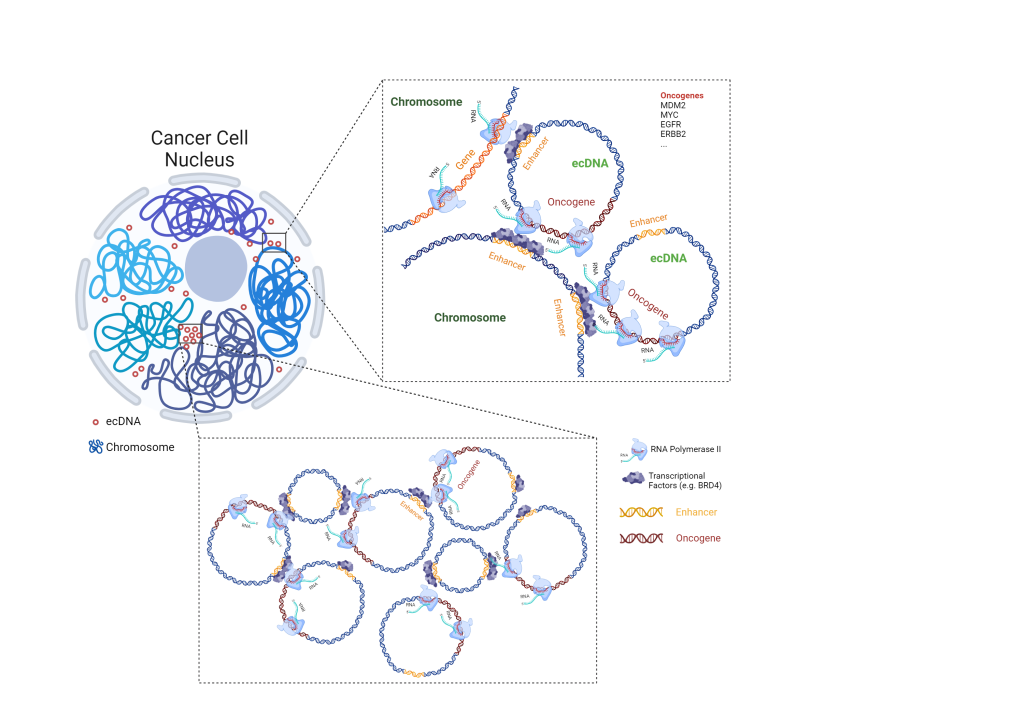Kim, Y.J.,* Lee, M. Jr.,* Lee, Y.T.,* Jing, J.,* Sanders, J.T., Botten, G., He, L., Lyu, J., Zhang, Y., Mettlen, M., Ly, P., Zhou, Y., and J. Xu. (2023). Light-activated macromolecular phase separation modulates transcription by reconfiguring chromatin interactions. Science Advances 9, eadg1123. (PubMed)
Botten, G., Zhang, Y., Dudnyk, K., Kim, Y.J., Liu, X., Sanders, J.T., Imanci, A., Droin, N., Cao, H., Kaphle, P., Dickerson, K.E., Kumar, K.R., Chen, M., Chen, W., Solary, E., Ly, P., Zhou, J., and J. Xu. (2023). Structural variation cooperates with permissive chromatin to control enhancer hijacking-mediated oncogenic transcription. Blood. 142, 336-351. (PubMed)
Lyu, J., Liu, Y., Gong, L., Chen, M., Madanat, Y.F., Zhang, Y., Cai, F., Gu, Z., Cao, H., Kaphle, P., Kim, Y.J., Kalkan, F.N., Stephen, H., Dickerson, K.E., Ni, M., Chen, W., Patel, P., Mims, A.S., Borate, U., Burd, A., Cai, S.F., Yin, C.C., You, M.J., Chung, S.S., Colins, R.H., DeBerardinis, R.J., Liu, X., and J. Xu. (2023). Disabling uncompetitive inhibition of oncogenic IDH mutations drives acquired resistance. Cancer Discovery 13, 170-193. (PubMed)
Shen, Y., Verboon, J.M., Zhang, Y., Liu, N., Kim, Y.J., Margolous, S., Nandakumar, S.K., Voit, R.A., Fiorini, C., Ejaz, A., Basak, A., Orkin, S.H., Xu, J., and V.G. Sankaran. (2021). A unified model of human hemoglobin switching through single-cell genome editing. Nature Communications 12, 4991. (PubMed)
Hao, Q., Zong, X., Sun, Q., Lin, Y.C., Song, Y.J., Hashemikhabir, S., Hsu, R.Y.C., Kamran, M., Chaudhary, R., Tripathi, V., Singh, D.K., Chakraborty, A., Li, X.L., Kim, Y.J., Orjalo, A.V., Polycarpou-Schwarz, M., Moriarity, B.S., Jenkins, L.M., Johansson, H.E., Zhu, Y.J., Diederichs, S., Bagchi, A., Kim, T.H., Janga, S.C., Lal, A., Prasanth, S.G., and K.V. Prasanth. (2020). The S-phase-induced lncRNA SUNO1 promotes cell proliferation by controlling YAP1/Hippo signaling pathway. eLife 9:e55102. (PubMed)
Kim, Y.J., Xie, P., Cao, L., Zhang, M.Q., and T.H. Kim. (2018). Global transcriptional activity dynamics reveal functional enhancer RNAs. Genome Res. 28, 1799-1811. (PubMed)
Zhao, Y.T., Kwon, D.Y., Johnson, B.S., Fasolino, M., Lamonica, J.M., Kim, Y.J., Zhao, B.S., He, C., Vahedi, G., Kim, T.H., and Z. Zhou. (2018). Long genes linked to autism spectrum disorders harbor broad enhancer-like chromatin domains. Genome Research 28, 933-942. (PubMed)
Johnson, B.S., Zhao, Y., Fasolino, M.D., Lamonica, J.M., Kim, Y.J., Wood, K.H., Bu, D., Cui, Y., Goffin, D., Kim, T.H., and Z. Zhou. (2017). Biotin tagging of MeCP2 reveals contextual insights into the Rett syndrome transcriptome. Nature Medicine 23, 1203-1214. (PubMed)
Kim, Y.J., and T.H. Kim. (2017). Chromosome conformation capture for research on innate antiviral immunity. Methods in Molecular Biology 1656, 195-208. (PubMed)
Tan, J.L., Fogley, R.D., Flynn, R.A., Ablain, J., Yang, S., Saint-André, V., Fan, Z.P., Do, B.T., Laga, A.C., Fujinaga, K., Santoriello, C., Greer, C.B., Kim, Y.J., Clohessy, J.G., Bothmer, A., Pandell, N., Avagyan, S., Brogie, J.E., van Rooijen, E., Hagedorn, E.J., Shyh-Chang, N., White, R.M., Price, D.H., Pandolfi, P.P., Peterlin, B.M., Zhou, Y., Kim, T.H., Asara, J.M., Chang, H.Y., Young, R.A., and L.I. Zon. (2016). Stress from nucleotide depletion activates the transcriptional regulator HEXIM1 to suppress melanoma. Molecular Cell 62, 34-46. (PubMed)
Banerjee, A.R.,* Kim, Y.J.,* and T.H. Kim. (2014). A novel virus-inducible enhancer of the interferon-β gene with tightly linked promoter and enhancer activities. Nucleic Acids Research 42, 12537-54. (PubMed)
Kim, Y.J., Greer, C.B., Cecchini, K., Harris, L.N., Tuck, D.P., and T.H. Kim. (2013). HDAC inhibitors induce transcriptional repression of high copy number genes in breast cancer through elongation blockade. Oncogene 32, 2828-2835. (PubMed)
Kim, Y.J., Cecchini, K.R., and T.H. Kim. (2011). Conserved, developmentally regulated mechanism couples chromosomal looping and heterochromatin barrier activity at the homeobox gene A locus. PNAS 108, 7391-7396. (PubMed).
Zorca, C.E.,* Kim, L.K.,* Kim, Y.J., Krause, M.R., Zenklusen, D., Spilianakis, D.G., and R.A. Flavell. (2015). Myosin VI regulates gene pairing and transcriptional pause release in T cells. PNAS 112, 1587-93.(PubMed)
Greer, C.B.,* Tanaka, Y.,* Kim, Y.J., Xie, P., Zhang, M.Q., Park, I.H., and T.H. Kim. (2015). Histone deacetylases positively regulate transcription through the elongation machinery. Cell Reports 13, 1444-1455. (PubMed)
*Contributed equally



